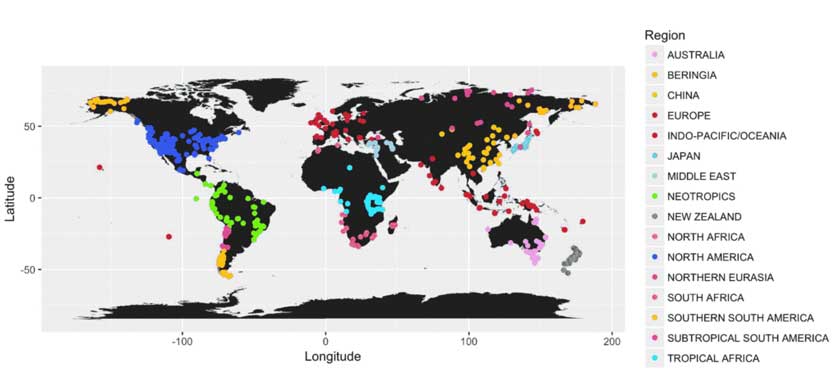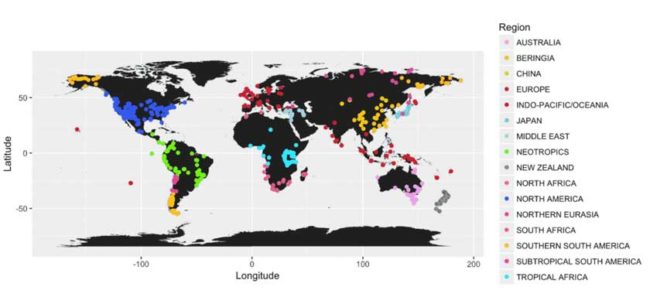Today’s key message is this: Without dramatic reductions in greenhouse-gas emissions, most of the planet’s land-based ecosystems—from its forests and grasslands to the deserts and tundra—are at high risk of “major transformation” due to climate change. This comes from a newly published study by an international research team.
Climate change warnings are often labelled as alarmist, and yet if the basis is evidence-based and sourced from subject matter experts then motoring ahead and ignoring it is quite frankly absurd.
Paleoclimate data reveals that dramatic changes have happened in the past and that it did radically alter things. While this latest study looks at what happened since the last ice age – dramatic sea level rise and also shifts in temperature – we know why that happened, and will continue to happen. Orbital variations due to the gravitational pull by other bodies in the solar system result in a regular pulse of ice ages roughly about every 50,000 years. We also know that the currently observed global warming is not that, but is due to the vast quantities of CO2 we are pumping out, what is going on is not natural, it is us, we are doing this. We have pushed the entire climate system out of this cycle into a new direction.
The new study has just been published in Science and highlights how ecosystems will be dramatically altered by the Climate Change that our activity is causing.
Past and future global transformation of terrestrial ecosystems under climate change
Published in Science on 31st Aug, it lays out the details of the study conducted by a very large group of 39 ecologists from all around the planet. They specifically looked at documented vegetational and climatic changes at almost 600 sites worldwide that have occurred since the last glacial maximum 21,000 years ago. Using this, they determined the vegetation responses to temperature changes of 4° to 7°C. They then used this data to estimate the extent of ecosystem changes under current similar (albeit more rapid) scenarios of warming.
Key Discovery: Without substantial mitigation efforts, terrestrial ecosystems are at risk of major transformation in composition and structure.
Author Comments and Observations
Jonathan Overpeck, dean of the School for Environment and Sustainability at the University of Michigan …
“If we allow climate change to go unchecked, the vegetation of this planet is going to look completely different than it does today, and that means a huge risk to the diversity of the planet,”
Mr Overpeck conceived the idea for the study with corresponding author Stephen T. Jackson of the U.S. Geological Survey.
This is not merely hypothetical. Some of the expected vegetational changes are already underway in places like the American West and Southwest, where forest dieback and massive wildfires are transforming landscapes.
“We’re talking about global landscape change that is ubiquitous and dramatic,” Overpeck said. “And we’re already starting to see it in the United States, as well as around the globe.”
Previous studies based largely on computer modeling and present-day observations also predicted sweeping vegetational changes in response to climate warming due to the ongoing buildup of carbon dioxide and other greenhouse gases.
But the new study, which took five years to complete, is the first to use paleoecological data—the records of past vegetation change present in ancient pollen grains and plant fossils from hundreds of sites worldwide—to project the magnitude of future ecosystem changes on a global scale.
Very Dramatic Rapid Changes
The team focused on vegetation changes that occurred during Earth’s last deglaciation, a period of warming that began 21,000 years ago and that was roughly comparable in magnitude (4 to 7 degrees Celsius, or 7 to 13 degrees Fahrenheit) to the warming expected in the next 100 to 150 years if greenhouse gas emissions are not reduced significantly.
Because the amount of warming in the two periods is similar, a post-glacial to modern comparison provides “a conservative estimate of the extent of ecological transformation to which the planet will be committed under future climate scenarios,” the authors wrote.
The estimate is considered conservative in part because the rate of projected future global warming is at least an order of magnitude greater than that of the last deglaciation and is therefore potentially far more disruptive.
“We’re talking about the same amount of change in 10-to-20 thousand years that’s going to be crammed into a century or two,” said Jackson, director of the U.S. Geological Survey’s Southwest Climate Adaptation Center. “Ecosystems are going to be scrambling to catch up.”
When will this happen?
Much of the change could occur during the 21st century, especially where vegetation disturbance is amplified by other factors, such as climate extremes, widespread plant mortality events, habitat fragmentation, invasive species and natural resource harvesting. The changes will likely continue into the 22nd century or beyond, the researchers concluded.
The ecosystem services that will be significantly impacted include carbon storage—currently, vast amounts of carbon are stored in the plants and soils of land-based ecosystems.
“A lot of the carbon now locked up by vegetation around the planet could be released to the atmosphere, further amplifying the magnitude of the climate change,” Overpeck said.
In the face of such warnings, doing nothing is not an option.

